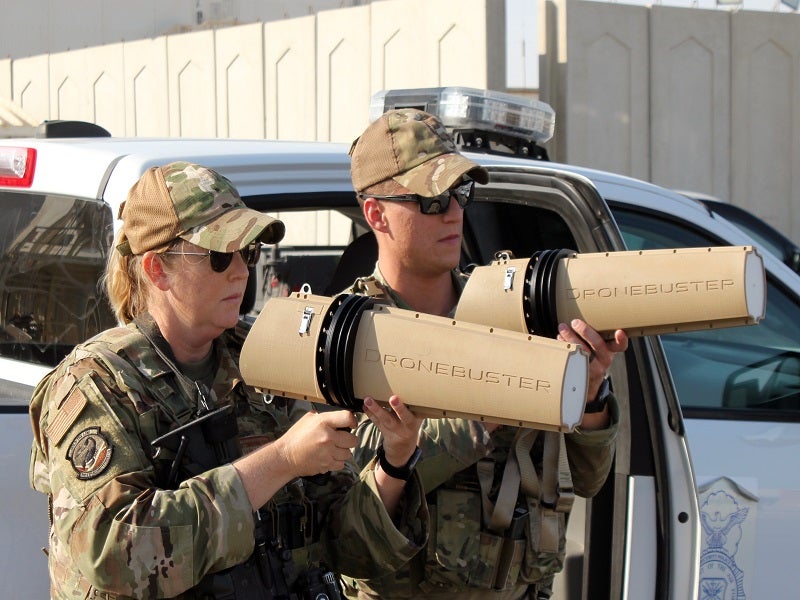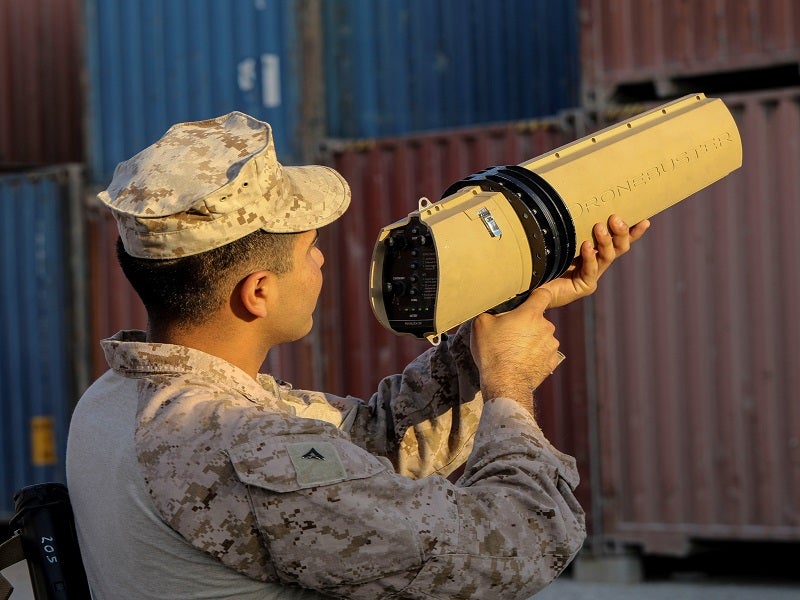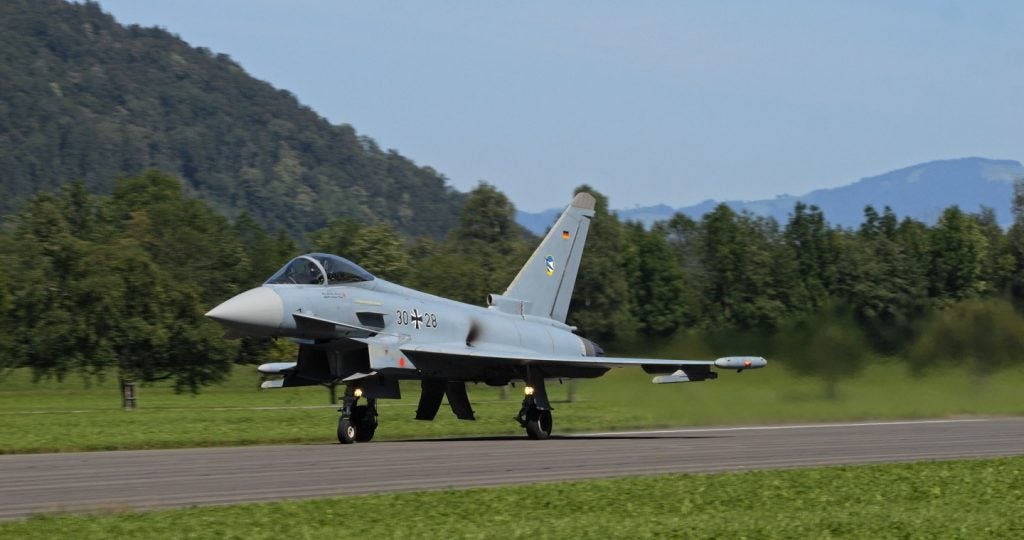Dronebuster C-UAS is a compact, lightweight, handheld counter-unmanned aerial system (C-UAS) solution for commercial off-the-shelf (COTS) drones that pose threat to fixed military establishments.
Designed and developed by US-based firm Flex Force Enterprises (Flex Force), it can be converted from an integrated, fixed-site jammer into a man-portable jammer that can be handled by dismounted troops and first responders.
The C-UAS is the only handheld electronic attack system approved by the US Department of Defense (DoD) for neutralising UAVs. It is being offered in multiple variants with different standard configurations based on user requirements.
Newcom Wireless Services, a turnkey solutions provider based in the US, was named the authorised distributor for Flex Force Enterprises in April 2021. It is responsible to market, sell and distribute the Dronebuster C-UAS.
Radio Hill Technologies (RHT), now part of Flex Force, received a contract for the sale of 100 Block 3 Dronebuster handheld C-UASs to the US Air Force (USAF) in June 2017. The merger of RHT and Flex Force was concluded in January 2019.
RHT completed the delivery of 200 Block 3 configuration Dronebusters to the US DoD and Nato partners by the end of 2017. Flex Force delivered the 1,000th system in February 2022.
Dronebuster C-UAS features
The Dronebuster is a radio frequency (RF) jammer designed to address the ever-increasing threat of drones. The Dronebuster Block 3 and Block 3B configurations disrupt the drone control frequency and force the drone to return to the operator. The Dronebuster can also overwhelm the global positioning system/global navigation satellite system (GPS/GNSS) signals to make the drone hover, land, or fall out of the sky.
The Block 3 and Block 3B configurations are offered either as stand-alone man-portable systems or for use as part of an integrated C-UAS solution.
The Dronebuster can be transformed into a fixed site system using optional Picatinny rail mounts installed on the top and bottom. The Block 3 variant supports line-of-sight (LOS) operation, while the 3B variant can operate beyond line-of-sight (BLOS).
The Dronebuster Block 3 has a length of 21in, a width of 6.5in and a height of 11in. It has an overall weight of 4.1lb (1.85kg).
The Block 3B and Dronebuster SNA variants measure 22in long, 5.5in wide and 10.5in high. The Dronebuster Block 3B has an overall weight of 6.4lb (2.9kg), while the SNA weighs 5.5lb (2.49kg).
Sensors and communications
The C-UAS system is equipped with an RF power meter and an analyser to counter drones even in low visibility. It allows the operator to detect the type of messages transmitted from the drone, including command and control (C2), video feeds, and telemetry data.
The system can jam industrial, scientific and medical (ISM) and Ham radio frequency bands to defeat the drone threats. The Dronebuster Block 3B can jam commercial satellite navigation frequencies and optionally simulate GNSS signals. It can jam ISM, Ham and GNSS frequencies simultaneously.
Mission compatibilities
The Dronebuster can be used to interdict a UAS flying near an army base. The system’s applications also include security of events, convoy, critical infrastructure and facilities. Furthermore, the C-UAS can be used by first responders to avert drone threats.
Dronebuster C-UAS performance
The system runs on a military-grade battery. It can also be powered by means of external DC power.
The Block 3 variant has more than three hours of endurance with continuous jamming and more than ten hours in RF detection mode.
The battery used in the Block 3B and SNA variants provides an endurance of more than 45 minutes with continuous jamming and more than ten hours while performing detection.









